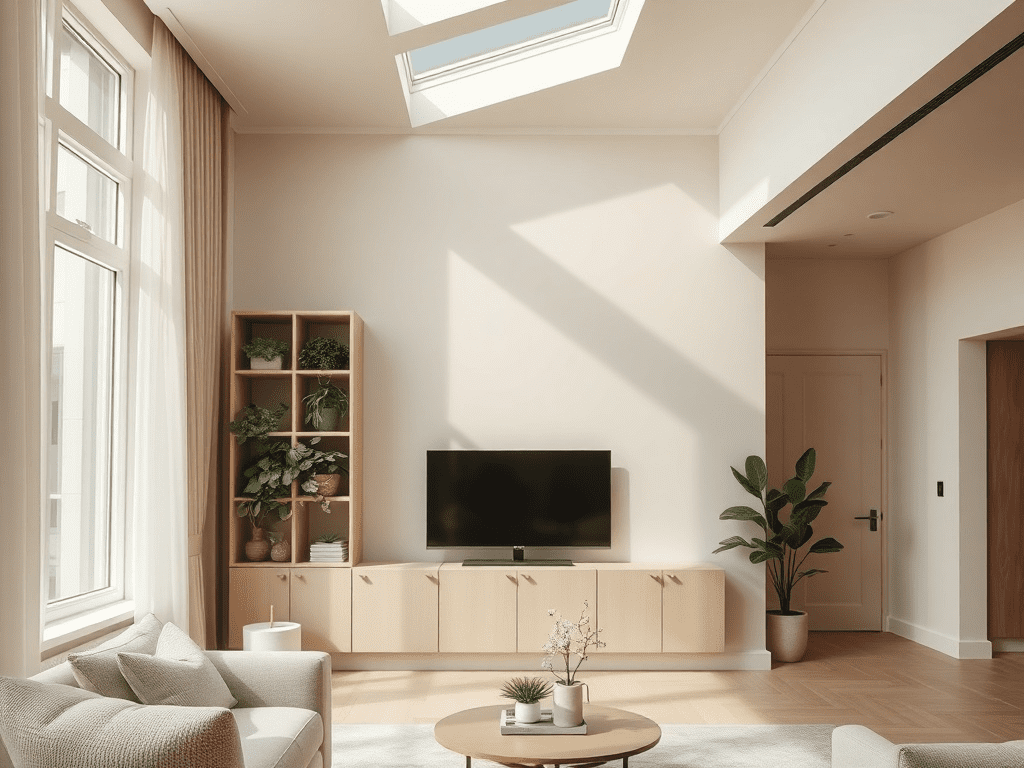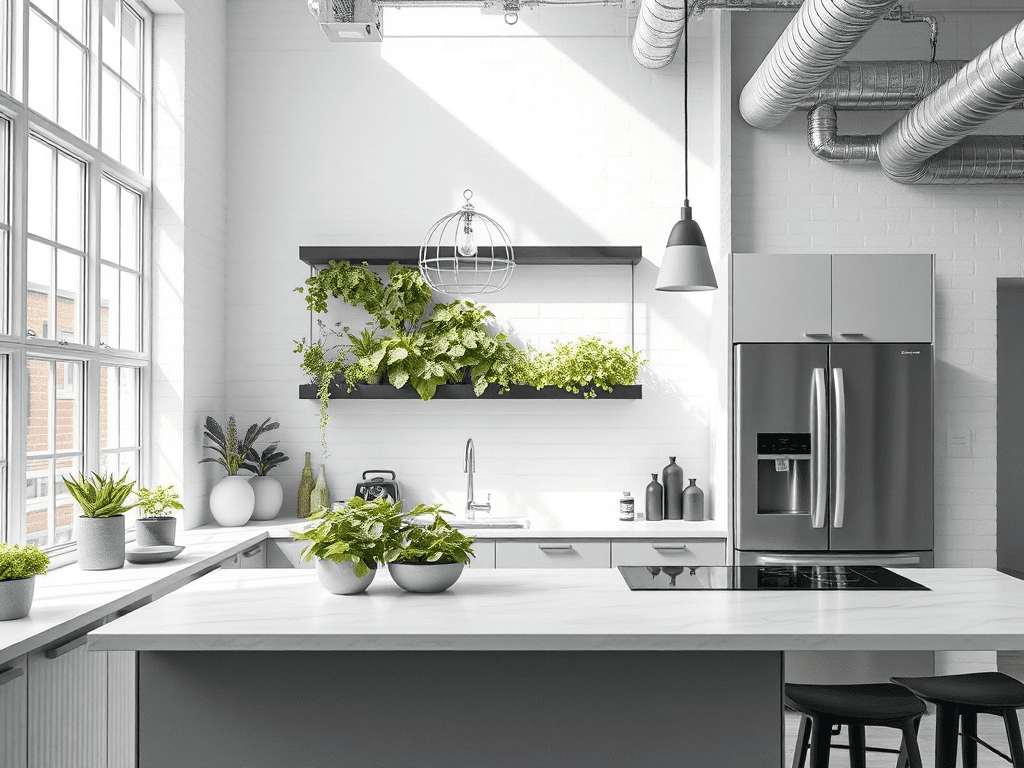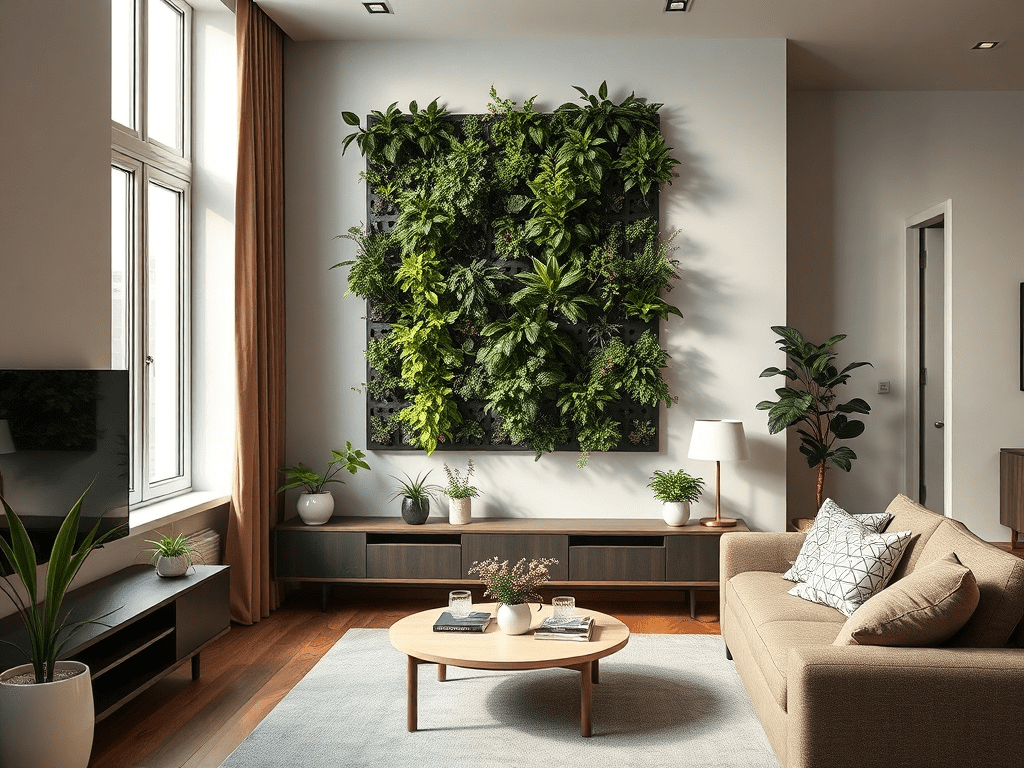Discover the transformative power of vertical garden design for indoor spaces. More than just a decorative trend, these living walls offer a unique blend of aesthetic appeal, air purification, and space-saving functionality. Whether you’re a seasoned plant enthusiast or a budding beginner, incorporating a vertical garden into your home can bring a touch of nature indoors and elevate your living environment.
What is vertical garden design for indoor spaces?
Vertical garden design for indoor spaces, also known as living walls or green walls, involves growing plants on a vertical surface, typically a wall or frame. These installations can range from small, modular units to large, custom-designed features that span entire rooms. They offer a creative way to bring greenery into homes and offices where space may be limited.

What are the benefits of having a vertical garden indoors?
Beyond their visual appeal, indoor vertical gardens offer a myriad of benefits:
- Air Purification: Plants naturally filter toxins from the air, improving indoor air quality. Studies have shown that indoor plants can significantly reduce levels of pollutants such as formaldehyde and benzene [EPA].
- Space Saving: Vertical gardens utilize vertical space, making them ideal for small apartments and urban dwellings.
- Aesthetic Enhancement: A well-designed vertical garden can transform a dull wall into a vibrant focal point.
- Stress Reduction: Studies suggest that exposure to plants can reduce stress levels and improve mood [NCBI].
- Improved Acoustics: Plants can absorb sound, helping to reduce noise levels in indoor spaces.
What types of plants are best suited for indoor vertical gardens?
Choosing the right plants is crucial for the success of your indoor vertical garden. Here are some of the best options:
- Low-Maintenance Options: Succulents, pothos, snake plants, and ZZ plants are known for their resilience and ability to thrive in low-light conditions. These are excellent choices for beginners or those with busy lifestyles.
- Air-Purifying Powerhouses: Peace lilies, spider plants, and English ivy are highly effective at removing toxins from the air.
- Herbs and Vegetables: If you’re looking to add a functional element to your vertical garden, consider growing herbs like basil, mint, and chives, or leafy greens like lettuce and spinach. Vertical garden design indoor spaces kitchen herbs can add a fresh flavor to your meals.
- Moss Walls: For a unique and low-maintenance option, consider a vertical garden design indoor spaces moss wall. Moss walls require minimal watering and can add a touch of natural texture to your space.
When selecting plants, consider the lighting conditions in your space and choose varieties that are well-suited to those conditions. Understanding the specific needs of each plant will help you create a thriving and sustainable vertical garden.
DIY Vertical Garden Design Indoor Spaces Tutorial
Creating your own DIY vertical garden design indoor spaces tutorial is easier than you might think. Here’s a step-by-step guide:
- Choose Your System: Select a vertical planter system that suits your space and budget. Options include modular planters, wall-mounted containers, and repurposed pallets.
- Prepare Your Wall: Ensure that your wall is protected from moisture by applying a waterproof barrier or using a backing board.
- Select Your Plants: Choose plants that are appropriate for indoor conditions and compatible with your chosen system.
- Planting: Gently remove plants from their containers and plant them in the vertical garden system using a suitable potting mix.
- Watering: Water your plants regularly, ensuring that the soil remains moist but not waterlogged. Consider a self watering vertical garden design indoor spaces systems for ease of maintenance.
- Lighting: Ensure that your plants receive adequate light, either from natural sources or supplemental plant lighting solutions.
Vertical Garden Design Indoor Spaces with LED Lighting
Proper lighting is essential for the health and growth of your indoor vertical garden. If your space lacks sufficient natural light, consider supplementing with LED grow lights. Vertical garden design indoor spaces with led lighting can provide the necessary light spectrum for optimal plant growth, even in dimly lit areas.

How do you water and maintain an indoor vertical garden?
Watering and maintenance are key to keeping your indoor vertical garden healthy and vibrant. Here are some tips:
- Watering Frequency: Water your plants when the top inch of soil feels dry to the touch. The frequency will vary depending on the plant species, the humidity level, and the temperature of your space.
- Fertilizing: Feed your plants with a balanced liquid fertilizer every few weeks during the growing season.
- Pruning: Trim your plants regularly to maintain their shape and encourage healthy growth.
- Pest Control: Inspect your plants regularly for pests and diseases. Treat any infestations promptly with appropriate organic pesticides.
How much light do indoor vertical gardens need?
The amount of light your indoor vertical garden needs will depend on the specific plants you are growing. Most indoor plants thrive in bright, indirect light. If your space doesn’t receive enough natural light, supplement with grow lights.

Can I build my own indoor vertical garden, or should I hire a professional?
Whether you build your own indoor vertical garden or hire a professional depends on your skill level, budget, and the complexity of the project. DIY options are more affordable and allow for customization, while professional installations offer expertise and ensure proper installation and maintenance.
What are some common problems with indoor vertical gardens, and how can I fix them?
Common problems with indoor vertical gardens include:
- Overwatering or Underwatering: Adjust your watering schedule based on the needs of your plants.
- Pest Infestations: Treat infestations promptly with appropriate organic pesticides.
- Nutrient Deficiencies: Fertilize your plants regularly with a balanced liquid fertilizer.
- Inadequate Lighting: Supplement with grow lights if necessary.
By addressing these issues promptly, you can keep your vertical garden healthy and thriving.
Affordable Vertical Garden Design Indoor Spaces Solutions
Creating a stunning vertical garden doesn’t have to break the bank. Affordable vertical garden design indoor spaces solutions include using recycled materials, repurposing existing containers, and choosing inexpensive plants.
Vertical Garden Design Indoor Spaces with Recycled Materials
Get creative and build your vertical garden using recycled materials like plastic bottles, wooden pallets, and tin cans. This is an eco-friendly and budget-friendly way to add greenery to your space. Vertical garden design indoor spaces with recycled materials adds a unique and personal touch to your home.
Vertical Garden Design Indoor Spaces Living Room Ideas
Transform your living room into a lush oasis with these vertical garden ideas:
- Living Wall: Cover an entire wall with plants for a dramatic statement.
- Modular Planters: Create a smaller vertical garden using modular planters arranged in a visually appealing pattern.
- Hanging Baskets: Suspend plants from the ceiling or wall using hanging baskets.
Small Apartment Vertical Garden Design Indoor Spaces
Even in a small apartment, you can enjoy the benefits of a vertical garden. Consider using wall-mounted planters, compact modular systems, or hanging baskets to maximize space. Small apartment vertical garden design indoor spaces brings nature into even the most compact living areas.
How much does an indoor vertical garden typically cost?
The cost of an indoor vertical garden can vary widely depending on the size, complexity, and materials used. DIY projects can range from a few dollars to a few hundred dollars, while professional installations can cost several thousand dollars.
What kind of soil is best for a vertical garden design in indoor spaces?
A lightweight and well-draining potting mix is best for vertical gardens. Avoid using heavy garden soil, as it can become compacted and waterlogged.
How do I prevent pests in my indoor vertical garden design?
To prevent pests in your indoor vertical garden, inspect your plants regularly, maintain good air circulation, and avoid overwatering. If you find any pests, treat them promptly with organic pesticides.
FAQ
What is vertical garden design for indoor spaces?
Vertical garden design for indoor spaces is the practice of growing plants on a vertically oriented structure or wall inside a building, rather than in traditional horizontal gardens.
What are the benefits of having a vertical garden indoors?
Benefits include improved air quality, space saving, aesthetic enhancement, stress reduction, and improved acoustics.
What types of plants are best suited for indoor vertical gardens?
Low-maintenance options like succulents, pothos, and snake plants are good choices. Air-purifying plants like peace lilies and spider plants also thrive. You can even grow herbs and vegetables.
How do you water and maintain an indoor vertical garden?
Water when the top inch of soil feels dry. Fertilize regularly during the growing season. Prune plants to maintain their shape and control pests with organic pesticides.
How much light do indoor vertical gardens need?
Most indoor plants thrive in bright, indirect light. Supplement with grow lights if needed.
Can I build my own indoor vertical garden, or should I hire a professional?
DIY is more affordable and customizable. Professional installation ensures expertise and proper maintenance.
What are some common problems with indoor vertical gardens, and how can I fix them?
Common problems include overwatering, pests, nutrient deficiencies, and inadequate lighting. Adjust watering, treat pests, fertilize, and supplement light as needed.
How much does an indoor vertical garden typically cost?
Costs range from a few dollars for DIY projects to several thousand dollars for professional installations.


